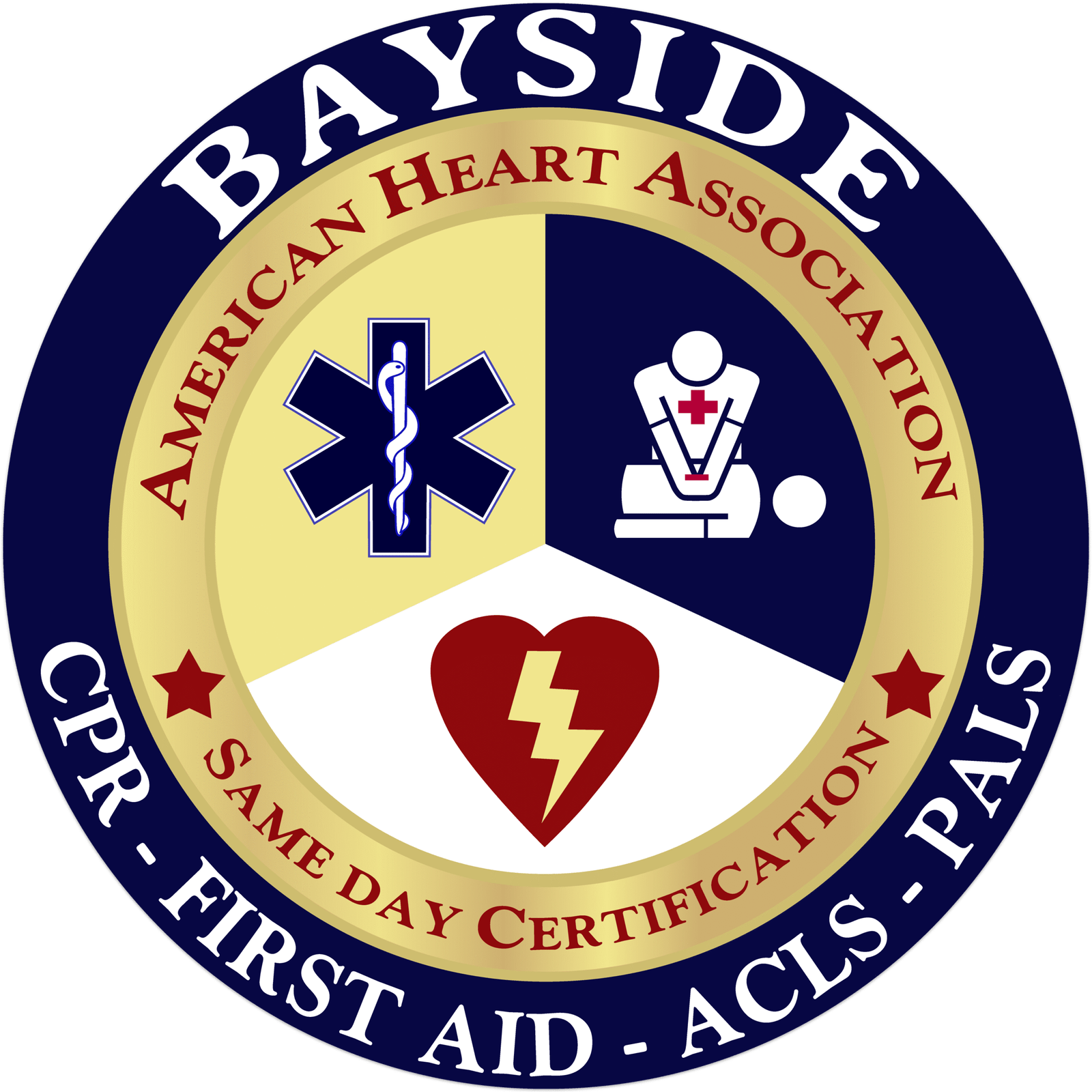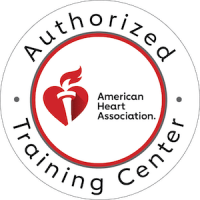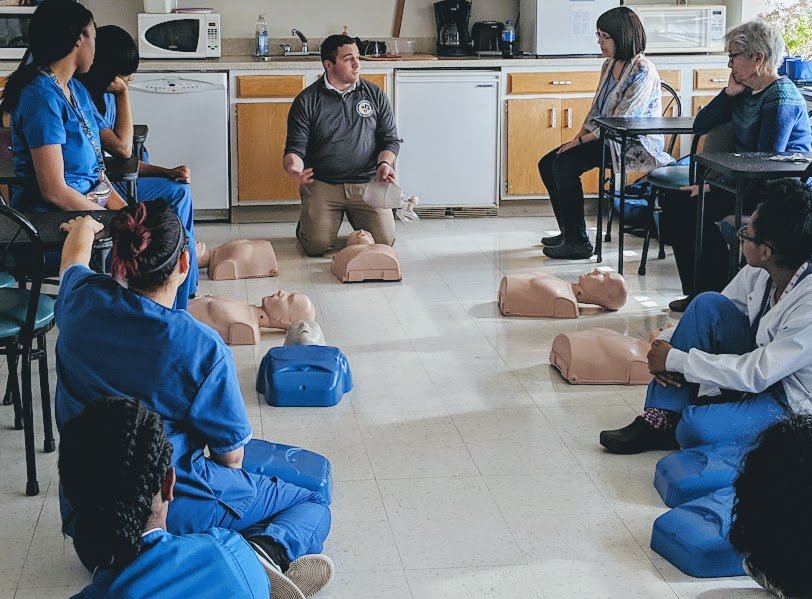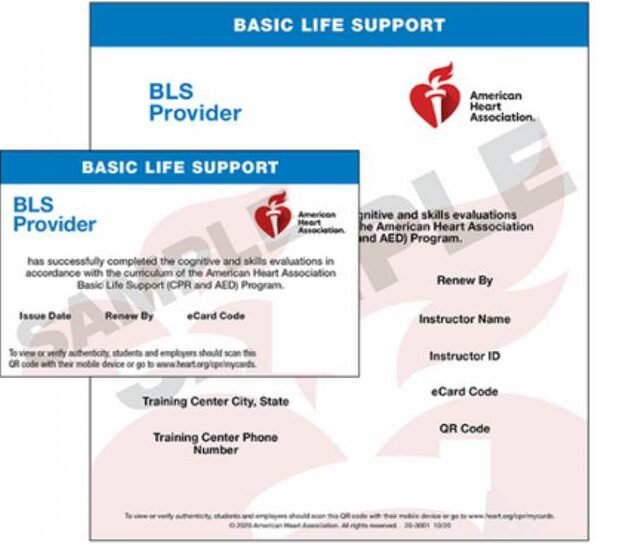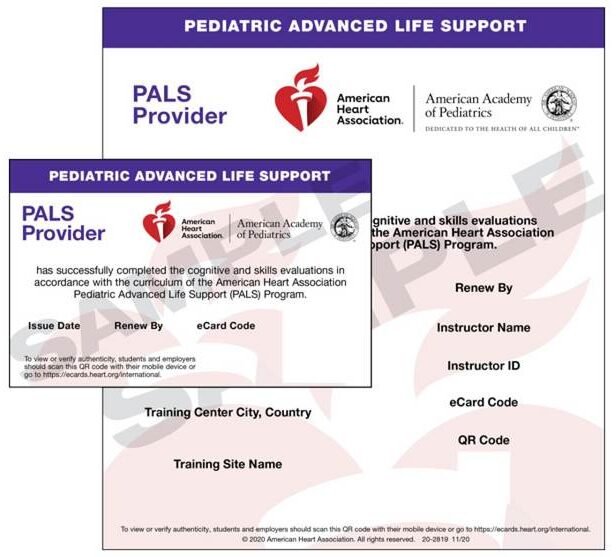When you’re responding to an emergency like cardiac arrest, myocardial infarction, someone collapsing, or a person in shock and decide to help them with CPR & first aid, there’s an important step you need to take before you touch them: “making sure it’s okay.” This is often called obtaining consent. You want to ask, “Are you okay with me helping you?” Or, if they’re unconscious or unable to answer, you act under the assumption that they would want help; this is called implied consent.
The reason this matters is that, legally, helping someone without their permission can sometimes lead to issues like accusations of assault, even if your intentions are good. So, understanding consent helps protect both you and the person you’re trying to help. In situations where the person can’t give consent, say they’re unconscious or seriously injured, you’re generally “legally required” to provide emergency service under Good Samaritan laws. These rules are designed to encourage helping others without fear of legal consequences, as long as you act reasonably and without negligence.
1. Why is being aware of the law guidelines important?
Being aware of the law is pretty important because it helps you stay on the right side of the law and avoid trouble. When you know the rules, you can make better decisions and act responsibly. It also shows respect for others and for the rules that keep society functioning smoothly. Plus, understanding these guidelines can protect you from legal penalties, fines, or even more serious consequences. Basically, it’s about keeping yourself safe and ensuring everything you do is fair and lawful.
According to AHA, women and men receive similar CPR assistance within the home, but in public, 45 % of men receive assistance compared to only 39 % of women. The difference in bystander CPR rates between men and women in public areas, with men more frequently receiving help than women, is mainly because of fears of being accused of sexual assault or inappropriate contact, as well as worries about harming a smaller or more fragile person. These concerns are especially strong in public settings due to increased social scrutiny (public observation).
2. Steps to Take Before You Touch a Person in an Emergency
Before jumping in to help, take a quick look around, make sure the scene is safe, wear gloves if you have them, and call for emergency help. If you’re able, let the person who is in trouble know who you are, check for any DNR orders, and avoid moving them unless it’s necessary.
2a. Assess the situation for safety
Before you touch someone in an emergency, it’s important to make sure it’s safe for both of you. Start by quickly checking the area. Is there anything around that could hurt you or them? Then, see if the person is responsive by gently shaking their shoulder and asking if they’re okay. This way, you can stay safe while figuring out what help they might need.
2b. Use PPE (Personal Protective Equipment )
Before providing any physical aid, remember to use personal protective equipment (PPE) like gloves and masks if available. PPE helps protect both you and the person you’re helping from infections or germs. It’s a simple step that keeps everyone safe while you assist in an emergency.
2c. Clarify your identity and your role when possible
When possible, be sure to introduce yourself and explain what you can do to help. For example, you might say, “Hi, my name is Kyle Hastings. I know how to perform CPR. How may I help you?” This helps the person understand that you’re there to assist and reassures them that help is on the way.
2d. If a person has DNR (Do Not Resuscitate) orders (if known)
If you know the person has a DNR (Do Not Resuscitate) order, it’s crucial to respect their wishes. If they have clearly expressed this, don’t perform CPR or other resuscitation efforts. Respecting their autonomy and existing medical directives is important, and if you’re unsure, it’s best to seek guidance from emergency services when they arrive.
2e. Call Emergency Services
Once you’ve assessed the situation, introduced yourself, and offered help, the next step is to call emergency services. Dial the local emergency number (like 911 in the U.S.) promptly to get professional assistance on the way. Provide them clear details about the location and what you’ve observed so they can send the right help quickly.
2f. Don’t Move Person Unnecessarily
Remember, avoid moving the person unnecessarily. Moving someone without a clear reason can sometimes cause more harm, especially if they have potential injuries like broken bones or head trauma. Only move them if there’s an immediate danger, like fire or falling debris, or if they need CPR and can’t be safely assisted without moving. Safety first; unless it’s urgent, keep them still.
You Might Be Interested In: Steps You Should Follow for Any Injury or Environmental Emergency
3. What to Do When Consent Cannot Be Obtained?
There are moments in emergencies when you simply don’t have time to ask for permission. If someone is unconscious, unresponsive, or unable to communicate, you’re allowed, and expected, to step in and help under what’s called implied consent. This means the law assumes that if the person were able to speak, they’d want you to do everything possible to save their life. You’re not overstepping; you’re acting in their best interest when they can’t make that call for themselves. You are the only emergency responder at that moment. In these situations, your top priorities are clear: protect life, prevent further harm, and get professional help as quickly as possible. Whether you’re providing CPR & First Aid, stopping bleeding injured person, or helping someone out of danger, your actions are legally and ethically supported. It’s about doing the right thing in the moment, because when every second counts, doing something is almost always better than doing nothing.
4. Documentation and Reporting
After an emergency, documenting what happened is just as important as the care you provided. Write down the actions you took, like checking responsiveness, calling 911, starting CPR, or using an AED. This record helps medical professionals understand what’s already been done and can also protect you legally, especially if questions come up later. Be as clear and accurate as possible, even if you were acting quickly under pressure.
It’s also important to note whether the person gave consent, refused help, or was unable to respond; this shows you respected their rights and followed proper protocol. If consent couldn’t be obtained, you can simply state that you acted under implied consent due to the person’s condition. Good documentation is about transparency and accountability, and it plays a key role in making sure everyone involved stays informed and protected.
5. What Are the Consequences of Not Following Legal Procedures During Emergencies?
If you don’t follow proper legal procedures during an emergency, you could face some serious consequences, both legally and professionally.
5a. Risk of Legal Issues
Good Samaritan laws protect people who try to help in good faith. The key is to act within your level of training and always prioritize the victim’s safety. As long as you’re trying to do the right thing and not acting recklessly, the law is usually on your side.
If you don’t follow proper procedures in an emergency, like performing CPR incorrectly or failing to act when you’re trained to help, there could be legal issues. These might include being sued for negligence, especially if your actions cause harm instead of helping.
5b. Risk of criminal charges
There’s also the risk of criminal charges if your actions in an emergency go beyond just being a mistake and cross into recklessness or intentional harm. For example, if someone performs a medical procedure without proper training or authorization and it results in serious injury or death, they could potentially face charges like criminal negligence or even manslaughter.
This is why it’s so important to stick to the skills you’ve been properly taught, follow established protocols, and never try to “wing it” in high-stakes situations. Your intentions might be good, but the law also considers the consequences of your actions.
5c. Delay in Receiving Medical Assistance
A delay in receiving medical assistance can seriously impact a person’s chances of recovery, especially in emergencies like a heart attack, choking, electrical shock, or severe injuries. Even a few minutes can make a huge difference between life and death or between a full recovery and long-term complications. That’s why quick action, calling emergency services right away, and starting basic first aid or CPR if you’re trained are so important. The longer it takes for professional help to arrive, the greater the risk that the situation will worsen, so every second truly counts.
Know Your Legal Responsibilities Before Assisting Someone in an Emergency
Before jumping in to help during an emergency, it’s important to understand your legal and ethical responsibilities. Whenever possible, always ask for consent, unless the person is unconscious or unable to respond, in which case, implied consent usually applies. Emergencies like cardiac arrest, drowning, suffocation, drug overdose, or someone collapsing demand immediate action, and as a bystander, you may have a duty of care depending on your training and role. Knowing your local laws, especially Good Samaritan protections, can help you act with confidence and avoid legal risks. When in doubt, focus on doing what’s best for the person while staying within your scope of training and respecting legal boundaries. After all, your actions can make a life-or-death difference, and staying informed protects both the patient and you. Bayside CPR offers certification in ACLS, PALS, and BLS to ensure you’re prepared to act safely and effectively in any crisis.
Note: Do you know: When CPR Is Needed and what are the key differences between CPR performed on Infants, Children, and Adults?
